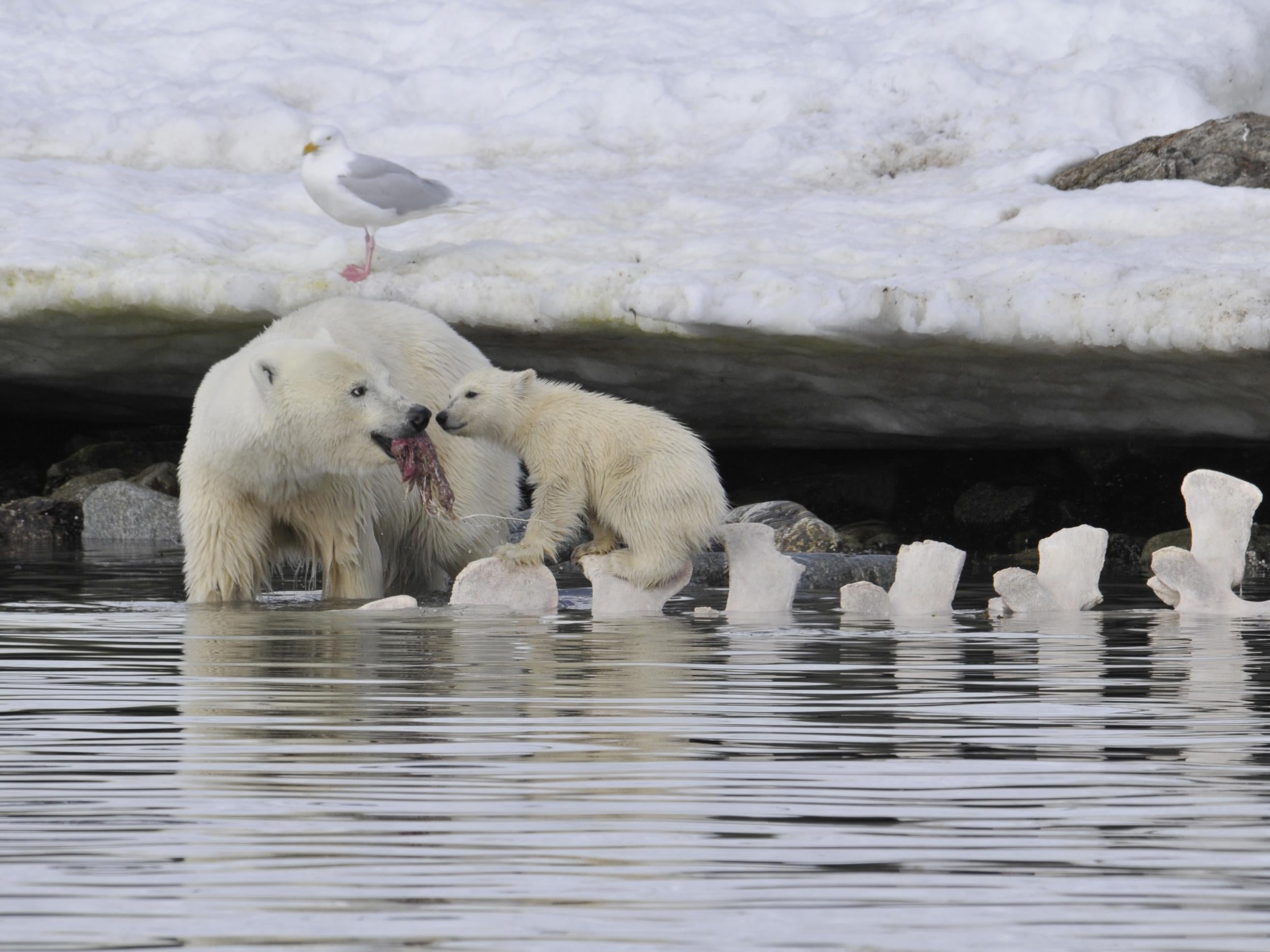Polar bears could face extinction as emergency food supply dries up, study finds
'If the rate of sea ice loss and warming continues unmitigated, what is going to happen to polar bear habitat will exceed anything documented over the last million years'
Your support helps us to tell the story
From reproductive rights to climate change to Big Tech, The Independent is on the ground when the story is developing. Whether it's investigating the financials of Elon Musk's pro-Trump PAC or producing our latest documentary, 'The A Word', which shines a light on the American women fighting for reproductive rights, we know how important it is to parse out the facts from the messaging.
At such a critical moment in US history, we need reporters on the ground. Your donation allows us to keep sending journalists to speak to both sides of the story.
The Independent is trusted by Americans across the entire political spectrum. And unlike many other quality news outlets, we choose not to lock Americans out of our reporting and analysis with paywalls. We believe quality journalism should be available to everyone, paid for by those who can afford it.
Your support makes all the difference.Polar bears will be robbed of the food supply that has kept them alive for thousands of years over the next few decades by climate change, a new study has warned.
When temperatures have risen in the past and melted Arctic sea ice, scientists believe the creatures survived by scavenging whale carcasses until the ice returned and they could hunt seals again.
However, the Intergovernmental Panel on Climate Change (IPCC) has concluded that ice-free summers could begin occurring again within decades.
“If the rate of sea-ice loss and warming continues unmitigated, what is going to happen to polar bear habitat will exceed anything documented over the last million years,” said Dr Kristin Laidre, a marine biologist at the University of Washington. “The extremely rapid pace of this change makes it almost impossible for us to use history to predict the future.”
Scientists expect there will be a summer in the Arctic without ice by 2040 if warming continues at its current rate.
Polar bears rely on ice because it provides them with a platform from which to hunt seals. If ice-free summers become a regular occurrence – which is predicted in the IPCC report if warming exceeds 2C, then Dr Laidre and her colleagues said whale carcasses are unlikely to save the bears.
Firstly, they note that while the Earth has gone through natural cycles of cooling and warming, the current rate of ice loss outstrips anything the bears have experienced before.
This is exacerbated by human intrusion into the Arctic.

Centuries of whaling, oil drilling and shipping in the region mean whales are nowhere near as abundant as they were during the last “interglacial” period when temperatures rose. Fewer whales means fewer carcasses to scavenge and this leaves bears vulnerable to severe declines and even extinction as their emergency food supply dries up.
Previous research has already documented polar bears undergoing rapid weight loss as Arctic ice gets thinner.
“The environmental changes are too large and the whale carcasses are too few,” said Dr Laidre.
The scientists initially set out to understand how bears could have made it through warmer historic periods in the context of a warming climate.
They documented their findings in the journal Frontiers in Ecology and the Environment.
With a nutritional value equivalent to over 1,000 seals, they found that large whales have the capacity to sustain bears for months or even years – making them perfect for seeing out hot summer seasons.
Their analysis of polar bears diets and whale protein and fat composition suggested that during the summer months a hypothetical population of 1,000 polar bears would need to eat about eight whales.
However, particularly in areas where whales are not as common like the island of Svalbard, the scientists predict strandings will not sustain the local bears.
“When we look at the situation now, ecologically, with respect to food sources, it’s a very different picture,” said Professor Ian Stirling of the University of Alberta, who has studied polar bears for 45 years. “The potential of whale carcasses to bail bears out may still be important in a few areas but, quite simply, their overall availability is going to be substantially less than before humans invaded the Arctic.”
Commenting on the team’s findings, WWF chief polar advisor, Rod Downie, said: “Polar bears face an uncertain future and we could lose about 30 per cent of the population by the middle of this century.
“That is predicted to happen on our watch. We need to plan for change in the Arctic now. And we need to make deep and rapid cuts to our carbon emissions across the world, in order to secure a future for these icons on ice.”

Join our commenting forum
Join thought-provoking conversations, follow other Independent readers and see their replies
Comments